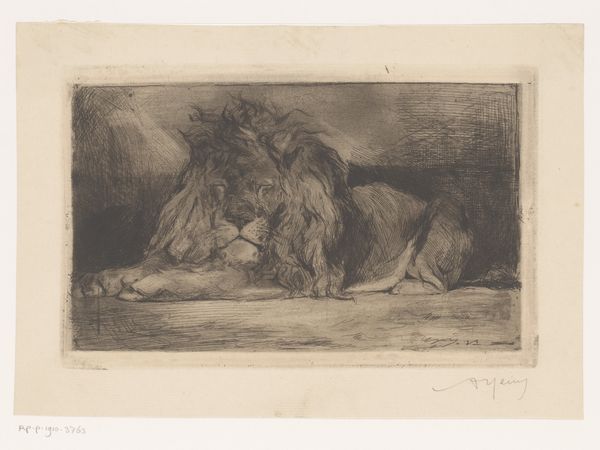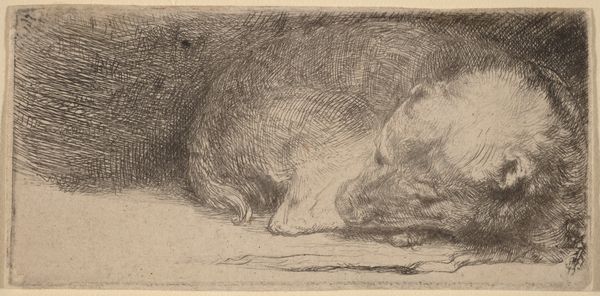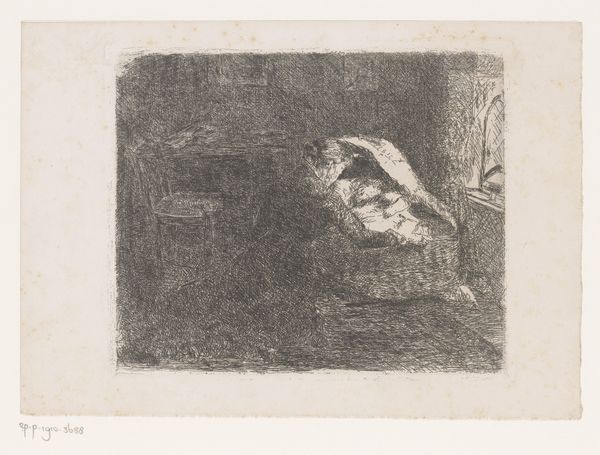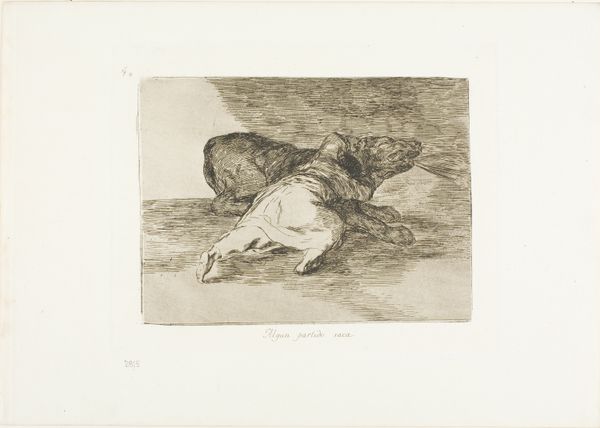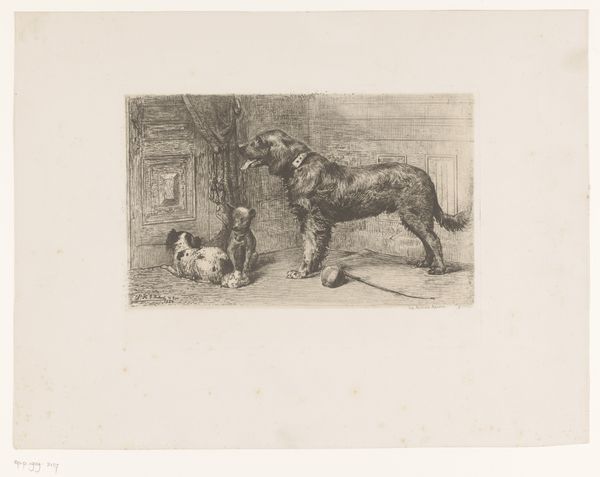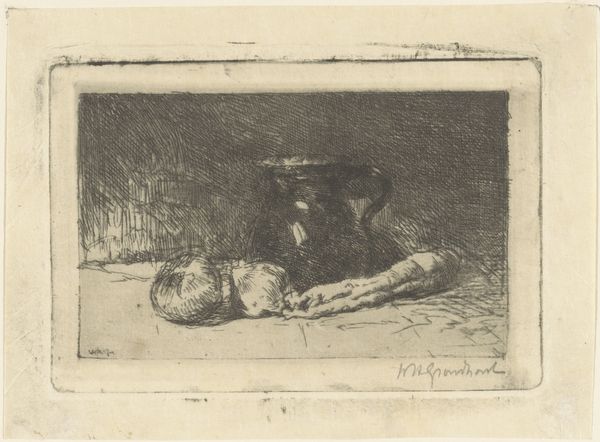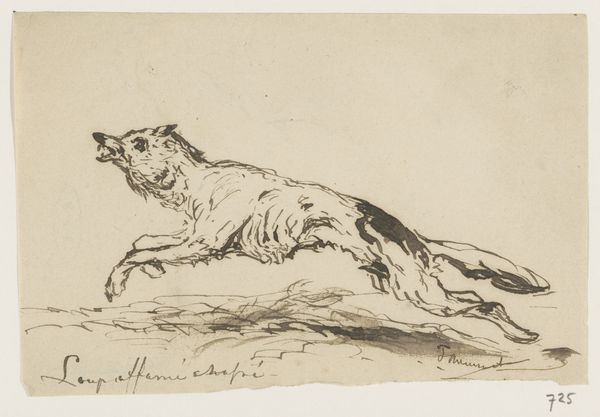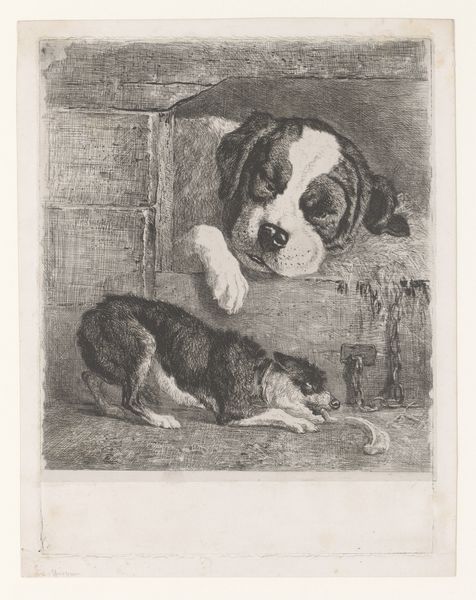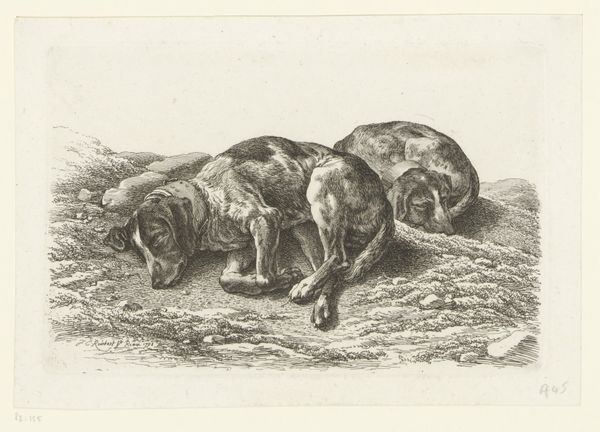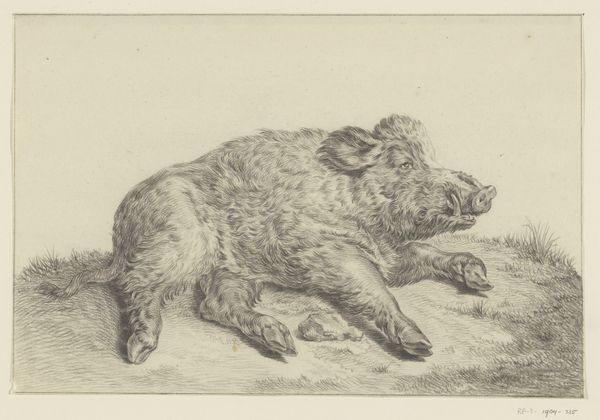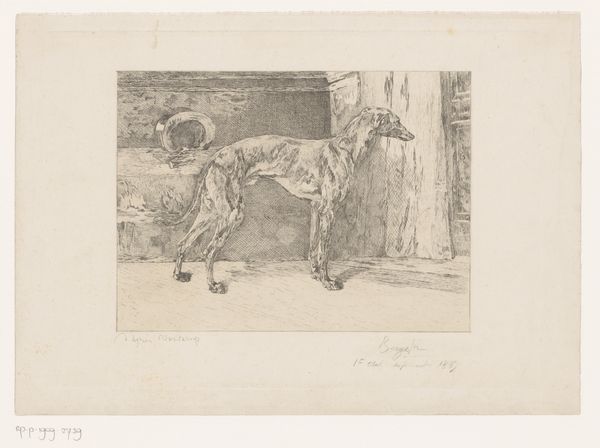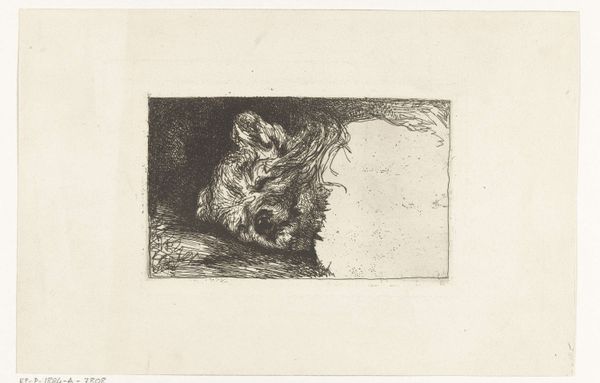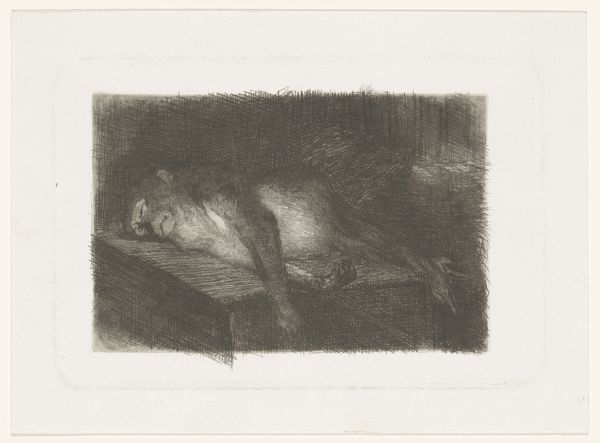
drawing, print, etching
#
portrait
#
pencil drawn
#
drawing
#
animal
# print
#
etching
#
pencil sketch
#
pencil drawing
#
limited contrast and shading
#
line
#
portrait drawing
#
pencil work
#
realism
Dimensions: height 113 mm, width 176 mm
Copyright: Rijks Museum: Open Domain
Editor: Here we have Ignace-Joseph de Claussin's "Slapende leeuw," dating from somewhere between 1805 and 1844. It’s a drawing and etching of a resting lion. There's a real sense of stillness and vulnerability that comes through in the animal’s posture. What do you see in this piece, from a historical perspective? Curator: Well, what immediately strikes me is how this seemingly simple depiction of a sleeping lion touches on the complex relationship between humans and animals in the 19th century, and its manifestation through art. This was a period where scientific interest in the natural world exploded, fueled by exploration and colonialism. Consider, how are lions generally presented at that time? Editor: Usually symbols of power, right? Emblems of royalty. Curator: Exactly. Lions frequently adorned aristocratic coats of arms or sculptures meant to project strength. Here, the lion is disarmed, at rest. He looks almost melancholic. Consider that many of these animals would have been viewed in captivity—in zoos or traveling menageries. Is there something to be said, therefore, about colonial power? The 'captured' or defeated animal, on display? Editor: That's interesting! So it's less about the inherent 'lion-ness' and more about the role it’s forced to play within society? Do you think that’s reinforced by the etching style – how it's quite stark and almost scientific? Curator: Precisely. The etching medium itself lent itself to detailed observation and dissemination of images – very much in line with scientific pursuits. The work walks the line between observation and something perhaps slightly deeper than that. A bit mournful even. What is the symbolism of the 'sleeping' giant, or the chained beast? Editor: I see, it's like the artist is inviting us to reflect not just on the animal, but our relationship to it. I hadn’t considered how much context shapes a seemingly simple image. Curator: And it is through understanding that context that art truly speaks. This drawing makes me consider the impact that colonialism has had on the animal world and subsequently, it changes my relationship to lions both real and imagined.
Comments
No comments
Be the first to comment and join the conversation on the ultimate creative platform.
